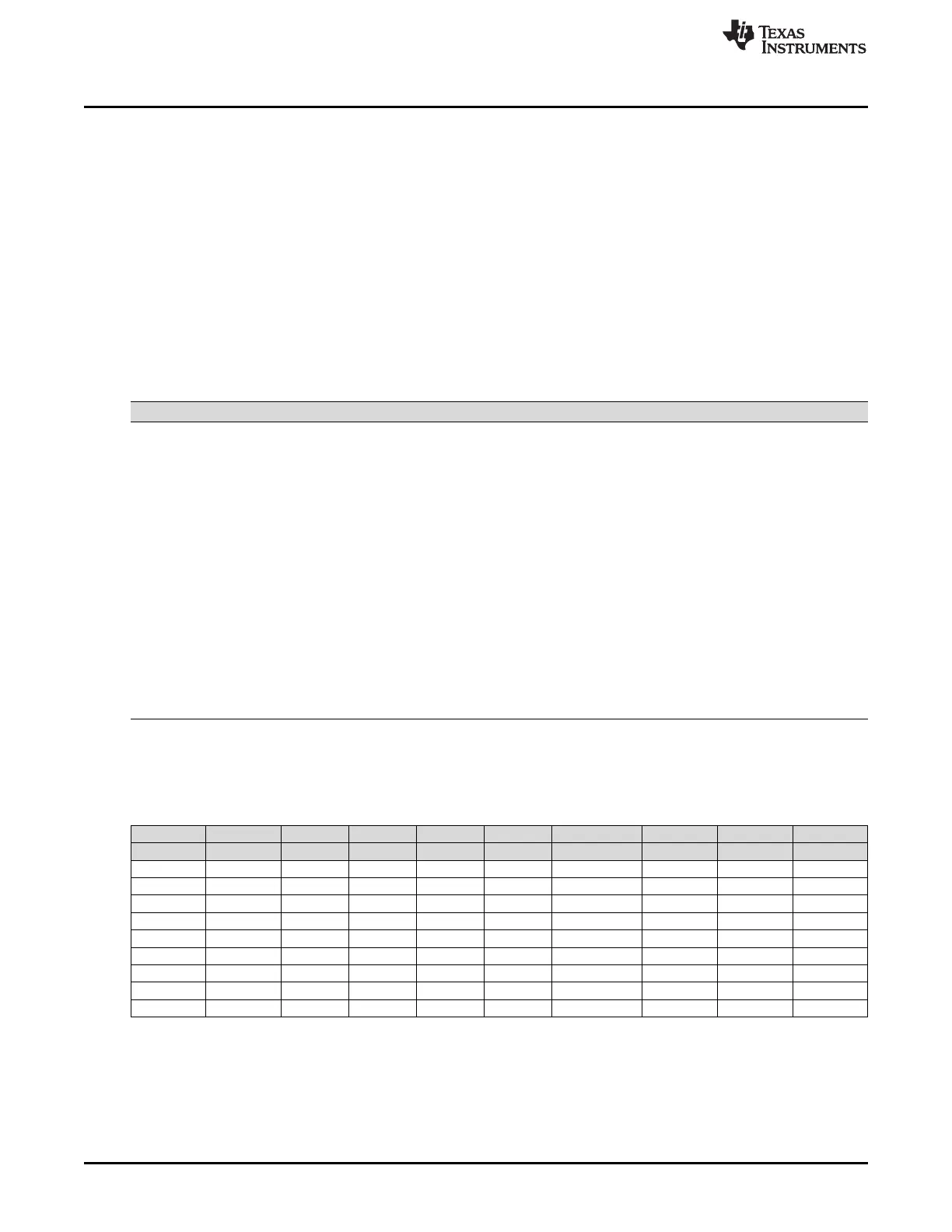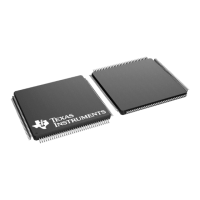EMIF Module Architecture
www.ti.com
798
SPNU563A–March 2018
Submit Documentation Feedback
Copyright © 2018, Texas Instruments Incorporated
External Memory Interface (EMIF)
21.2.5 SDRAM Controller and Interface
The EMIF can gluelessly interface to most standard SDR SDRAM devices and supports such features as
self refresh mode and prioritized refresh. In addition, it provides flexibility through programmable
parameters such as the refresh rate, CAS latency, and many SDRAM timing parameters. The following
sections include details on how to Interface and properly configure the EMIF to perform read and write
operations to externally connected SDR SDRAM devices. Also, Section 21.4 provides a detailed example
of interfacing the EMIF to a common SDRAM device.
21.2.5.1 SDRAM Commands
The EMIF supports the SDRAM commands described in Table 21-4. Table 21-5 shows the truth table for
the SDRAM commands, and an example timing waveform of the PRE command is shown in Figure 21-2.
EMIF_A[10] is pulled low in this example to deactivate only the bank specified by the EMIF_BA pins.
Table 21-4. EMIF SDRAM Commands
Command Function
PRE Precharge. Depending on the value of EMIF_A[10], the PRE command either deactivates the open row in all
banks (EMIF_A[10] = 1) or only the bank specified by the EMIF_BA[1:0] pins (EMIF_A[10] = 0).
ACTV Activate. The ACTV command activates the selected row in a particular bank for the current access.
READ Read. The READ command outputs the starting column address and signals the SDRAM to begin the burst read
operation. Address EMIF_A[10] is always pulled low to avoid auto precharge. This allows for better bank
interleaving performance.
WRT Write. The WRT command outputs the starting column address and signals the SDRAM to begin the burst write
operation. Address EMIF_A[10] is always pulled low to avoid auto precharge. This allows for better bank
interleaving performance.
BT Burst terminate. The BT command is used to truncate the current read or write burst request.
LMR Load mode register. The LMR command sets the mode register of the attached SDRAM devices and is only
issued during the SDRAM initialization sequence described in Section 21.2.5.4.
REFR Auto refresh. The REFR command signals the SDRAM to perform an auto refresh according to its internal
address.
SLFR Self refresh. The self refresh command places the SDRAM into self refresh mode, during which it provides its own
clock signal and auto refresh cycles.
NOP No operation. The NOP command is issued during all cycles in which one of the above commands is not issued.
Table 21-5. Truth Table for SDRAM Commands
SDRAM Pins: CKE nCS nRAS nCAS nWE BA[1:0] A[12:11] A[10] A[9:0]
EMIF Pins: EMIF_CKE EMIF_nCS[0] EMIF_nRAS EMIF_nCAS EMIF_nWE EMIF_BA[1:0] EMIF_A[12:11] EMIF_A[10] EMIF_A[9:0]
PRE H L L H L Bank/X X L/H X
ACTV H L L H H Bank Row Row Row
READ H L H L H Bank Column L Column
WRT H L H L L Bank Column L Column
BT H L H H L X X X X
LMR H L L L L X Mode Mode Mode
REFR H L L L H X X X X
SLFR L L L L H X X X X
NOP H L H H H X X X X

